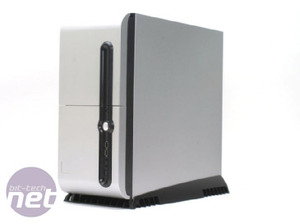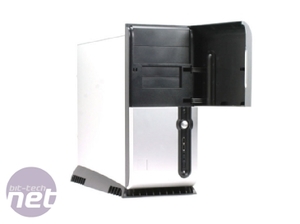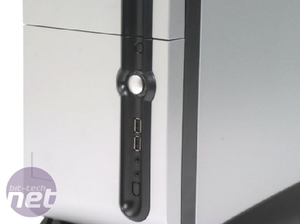
Arctic Cooling Silentium T2 Eco 80
Manufacturer: Arctic CoolingUK Price (as reviewed): £55.29 (inc. VAT)
US Price (as reviewed): TBC
There are all sorts of niches to be found in PC hardware. There’s budget hardware, gaming rigs, enthusiast systems, simple PCs like the Asus Eee PC, overclocked…the list goes on.
One of the most interesting niches that has cropped up as of late has been the green niche – hardware that is focused towards being environmentally friendly and light on the conscience. There’s also the niche of utterly noiseless cases, for people for whose primary concern in a case isn’t performance and they are willing to cope with a lack of oomph as long as they don’t have to hear the hardware wheezing.
It’s into both these niches that the Arctic Cooling Silentium T2 Eco 80 tries to wedge itself. The two don’t sound like they should really go together – to have a noiseless case often involves using extra layers plastic or rubber which use up extra materials and lose the case any environmentally friendly claims.
Arctic Cooling is being bold though, claiming that it has managed to weld the two properties of being quiet and eco-minded into one case; the Silentium T2 Eco 80, which comes with a special green PSU built in. They say that fortune favours the bold, but it’s also well known that bit-tech scorns the foolish – so let’s take a look and see if its claims are well founded, or if the T2 deserves to be terminated, permanently.
Damn Hippies
Let’s look at the outside of the case to start with. If we all turn around and face the truth then it’s fair to say that we’re pretty shallow people and that it doesn’t matter how Ozone pleasing or quiet the case is, if it isn’t good looking then it isn’t getting a good look in our living rooms.At first glance the T2 case seems fairly run of the mill. It’s silvery grey all over like some sort of futuristic cutlery, with a black plastic stand underneath and a vertical set of ports and buttons on the front.
The top of the bezel is curved off too to soften the severity of the head-on view, though it’s also possible that this was done just to make photography a bit of a pain.
All in all, the front of the case doesn’t look to be all that bad. It’s a little generic and lacking in personality maybe, but at least it doesn’t divide the market starkly into Tim versus Everyone Else, like certain other cases do.
But, unfortunately, that illusion of a mild-mannered and inoffensive chassis can’t last and the moment you touch the case the façade comes tumbling down like the brilliantly constructed lie it is. The moment you open the door in the top half of the bezel is the moment that you’ll know the horror of such flimsily constructed plastic. When you go to turn on the PC and feel the shaky, poorly housed button is when you shall truly appreciate the worth of ‘The Martin Button-Stability Test’ and its ramifications for build quality.
Are we exaggerating? Perhaps a little, but there’s a nugget of truth in there too and the disconnect between the look of the case and the feel of it is honestly quite jarring.
Those of you wanting to build a super system inside the Silentium T2 may be a bit dismayed too. In fact, you may as well just stop reading at the end of the next sentence. The front of the case only has room for two 5.25” drives and two 3.5”ers, so it isn’t exactly built to house the type of super-system you’d love to own.
Still, providing for those who are looking to waggle their e-peen until it falls off and gets stuck in a fan isn’t exactly what the Silentium T2 is aiming to do, so it’s possibly a little unfair to judge it by those standards. This is a basic case with the explicitly stated (if somewhat hippie-ish) aims of being both quiet and environmentally friendly – so let’s skip all this appearance rubbish and get under the skin to see how the T2 intends to be so quiet and green.

MSI MPG Velox 100R Chassis Review
October 14 2021 | 15:04












Want to comment? Please log in.